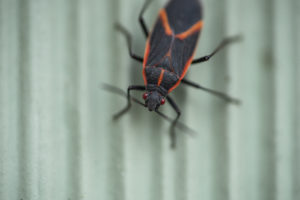With Valentine’s Day soon approaching you may have a special night planned, but your valentine might be upset when the romantic night results in bed bug bites. Bed bug bites can lead to severe itching and welt-like bumps, not to mention the high cost of eradicating bed bugs if they hitch a ride back to your home. Research has linked financial distress, anxiety and social isolation with bed bug invasions. The instances of bed bugs in hotels are on the rise. Fortunately, there are steps you can take to greatly reduce the chance you’ll bring them home.
How Can You Avoid & Prevent Bed Bugs & Their Bites When Sleeping in Hotels
1. Wait to check out the view. While you check out your room put your luggage in the bathroom. The last place you’re likely to find bed bugs is in the bathroom because they don’t like tile floors and there aren’t places for them to hide. They will hide in areas close to where you sleep.
2. Check the bed for bed bugs. Pull the linens back and thoroughly check the mattress. All the way around it, under it and behind the headboard. Look for blood stains or small specks that look like ground pepper. You should also look for any bed bugs. They are the size and shape of an apple seed and you will most likely find them in the corners and the seams of the bedding or mattress. If you are at all suspicious, contact a member of the hotel staff right away.
3. Inspect the room for signs of bed bugs. After you’ve finished checking the bed, look at the rest of the room, especially around the bed. Look behind the picture frames, under the alarm clock and the phone. Research shows that bed bugs are usually located within 15 feet of a bed. This doesn’t mean they’re not further away than that though. Check the sofas or soft chairs in the room and the closet before you unpack.
4. Don’t keep luggage on the floor where bed bugs can crawl in. If you want to avoid bringing bed bugs home, it’s a good idea to keep your luggage off the floor and the spare bed. They can travel from room to room. If they aren’t in your room, to begin with, they might travel there when they locate a food source. Keep your luggage on the desk or the dresser instead.
5. Bring bed bug proof plastic bags with you. Purchase a plastic bag that zips up and bring it along with you. You can keep your luggage in it during your trip to protect your bag.
6. Educate your kids about bed bugs. Tell your children why you’re looking through the room. They need to be educated on bugs other than bees and mosquitoes.
7. If you happen to find signs of a bed bug problem, ask to be moved two floors away. Bed bugs are good at moving through wallboards and electrical sockets
8. Don’t sit quietly. Don’t put your family at risk of bed bugs because you’re worried about making a big deal. Hotels should have no problem moving you to another room. They don’t want to pass bed bugs along or leave problems untreated.
Bed Bug Inspections, Prevention & Control
Make sure your Valentine’s Day or other travel plans go smoothly and take steps to prevent a bed bug nightmare. Before planning your romantic getaway or other trips, take a little time to read reviews. You can look for reported bed bug problems in the hotel you’re planning to stay at. Rentokil are experts at bed bug issues in hotels. If you are a hotel owner or manager, contact us today to learn how to keep your guests bed bug free in your accommodation facility!

 Boxelder bugs are insects that are black with orange or red lines on the thorax and sides. They have flat wings and are ½ an inch long as adults. Outdoors, they make their homes in boxelder, maple, and ash trees. They aren’t pests in the summer as they go unnoticed, but are a problem in the fall as they search for a place to spend the winter. They are generally inactive in the winter but if the day is sunny and warm, they can become mobile in the walls and attic. An infestation may not occur all at once at the same time, as they will be in different parts of the home and the warmth will not reach them all equally. Any boxelder bug you see inside your home in the winter and spring made its way inside the previous fall.
Boxelder bugs are insects that are black with orange or red lines on the thorax and sides. They have flat wings and are ½ an inch long as adults. Outdoors, they make their homes in boxelder, maple, and ash trees. They aren’t pests in the summer as they go unnoticed, but are a problem in the fall as they search for a place to spend the winter. They are generally inactive in the winter but if the day is sunny and warm, they can become mobile in the walls and attic. An infestation may not occur all at once at the same time, as they will be in different parts of the home and the warmth will not reach them all equally. Any boxelder bug you see inside your home in the winter and spring made its way inside the previous fall.